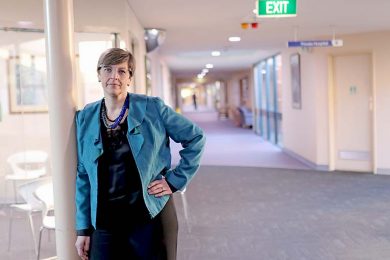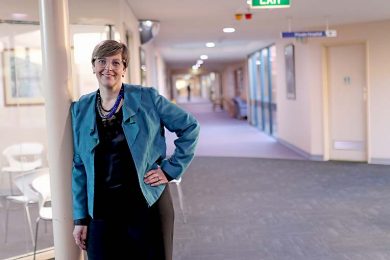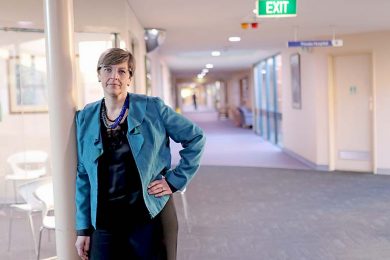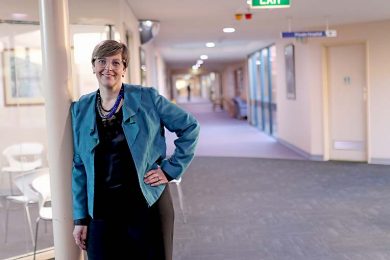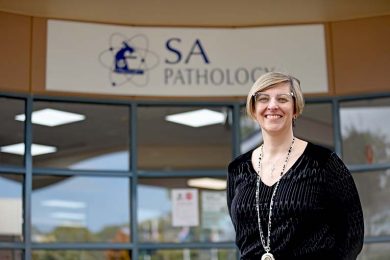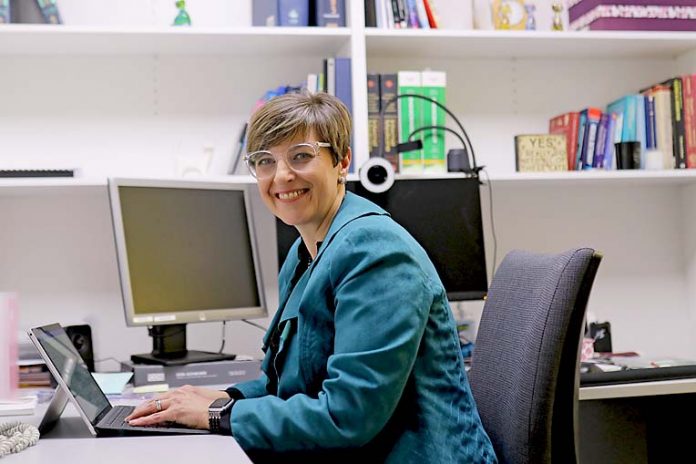
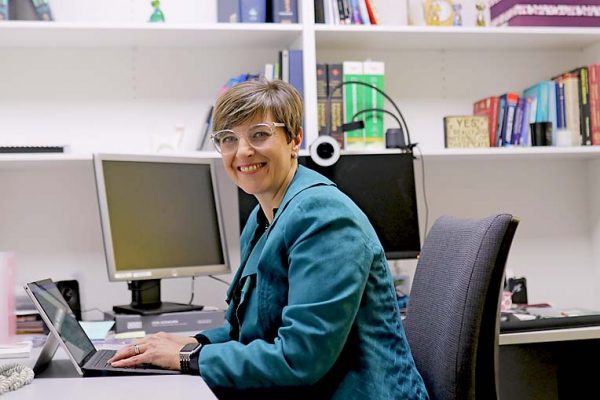
Dr Elaine Pretorius has been the Limestone Coast’s leading lady during the COVID-19 health crisis, leading the region’s response from Mount Gambier Hospital while being the voice of clarity for our community. She recently spoke with The Border Watch to share her journey to the Blue Lake city and her experience with handling the current pandemic.
A LIMESTONE Coast resident for all of seven months, Dr Elaine Pretorius has spent more than half her time in the region leading the health response to COVID-19 as executive director of medical services.
Employed by the Limestone Coast Local Health Network, Dr Pretorius has been a central figure in managing the regional response to the pandemic and has been crucial in sharing information with the public to inform residents.
Dr Pretorius said although it had not been an ideal transition into her new role as the global pandemic struck, she had enjoyed the steep learning curve and found positives along the way.
“It did force me to build relationships which would normally take months to make,” she said.
“Although it was scary, I have felt the burden of it, being an enormously responsible position having to communicate directly with the community.
“I am very blessed as we have a fantastic executive team here in the Limestone Coast who have all been very welcoming and supportive.”
MEDICAL JOURNEY
Before moving to the Blue Lake city, Dr Pretorius grew up in a conservative South African community, graduating from her primary medical degree at the University of Pretoria in 1993.
Now with a dual specialisation in general medicine and endocrinology, Dr Pretorius said she did not consider medicine to be a real passion until around her fourth year of study.
“I think what makes medicine such a wonderful career is it is so varied and for every person, they can find their spot,” she said.
“When I began in private practice I actually found I really disliked it,” she said.
“ I found it lonely and it was not really excited me around medicine.
“What excites me is how we make things better, how we think about our system, how we supply a better service for our patients and make it easier when they have illnesses.”
Selling her practice in 2003, Ms Pretorius moved to Cambridge in the United Kingdom as a specialist registrar in endocrinology, where she spent almost 12 months.
“That was fantastic, because I worked with all the rock stars of endocrinology,” she said.
“It was such a thrill to be part of such extraordinary people and the service they provided.”
At the end of 2005, she then had the opportunity undertake a year of reproductive endocrinology training with professor Steve Judd at Flinders Medical Centre and made the move to Adelaide.
“I was only planning to stay for a year, but then I met my husband who is Australian and ended up staying forever,” she said.
After a year, Dr Pretorius said she moved to the Lyell McEwin Hospital as a general physical, but eventually started to build an independent endocrine service.
“Now I personally think it is probably the best endocrine services in South Australia and I am very proud of the team,” she said.
“At the time I wrote the in-patient diabetes guidelines which were later used to adapt state wide management of diabetes.
“It was a very productive time of my career and definitely a highlight.”
Dr Pretorius said she also helped establish the first South Australian adult public trans-gender clinic.
“It happened by chance, but it turned out to be such a privilege to met the transgender community and make a difference in their lives,” she said.
“It is still going and it is going well and I believe there are plans to expand it. It is one of the things which makes me the proudest.”
After a restructure, the Northern Adelaide Local Health Network was established and Dr Pretorius was appointed as the inaugural divisional director for medicine where she served for seven years.
The region’s medical chief said the position crystalised her thinking, also undertaking a masters in health administration during her service.
Dr Pretorius said she then became a Transforming Health ambassador, which she considered tough as not everybody was on board with the group development.
“You learn to recongise criticism is not always a personal thing and it is rewarding to be able to grow as a person when managing difficult situations,” she said.
“I then had the opportunity to work as the NALHN deputy director of medical services, specifically concentrating on clinical engagement and wider quality and safety issues.
“It was good, but it started feeling like I had itchy feet.”
LIMESTONE COAST FULL OF OPPORTUNITIES
Dr Pretorius said when there was a disbandment of Country Health SA and six independent regional allied chambers were established, she saw the Limestone Coast as an opportunity.
“I am now not just responsible for Mount Gambier, but all the other hospitals in our network including Bordertown, Penola, Naracoorte, Millicent and Kingston,” she said.
“I have been here now for seven months and a big part of my service has been occupied by COVID-19.
“Having said that, there is just enormous potential to be able to provide new and better services to try and treat as many people from the Limestone Coast community as close to home as we possibly can.”
Dr Pretorius said she would like to explore additional services, how things could be improved and how the community could become more involved with planning procedures.
“Mount Gambier makes me think of the Lyell McEwin Hospital when I began there years ago,” she said.
“There is just such enormous potential and it is really exciting to think we can make a difference and be able to contribute.
“Mount Gambier has a good hospital which also brings many challenges and I look forward to be able to improve what is a good service into making it an exceptional service.”



